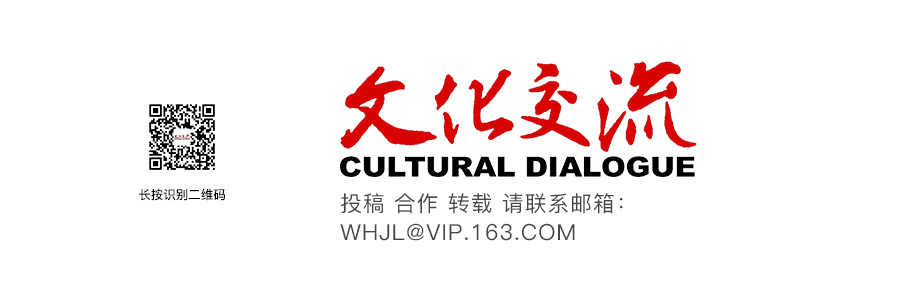文物承载着灿烂的文化,比如良渚古城出土的玉。
文化因传承而灿烂,比如,浙江的龙泉青瓷,其美誉仍在全球播撒;比如,产自浙江龙泉六瓣花环形的马蝗绊,在日本享受着最崇高的礼遇。
龙泉青瓷的特点是温润如玉、清脆典雅、明滑透亮。是不是因了她的自然纯朴,内敛而不张扬,使得东方文化受世人的喜爱,以致在千年前便承担起海上丝绸之路重要使者这一角色?
本期视点,我们关注的是中国瓷的代表之一龙泉青瓷,龙泉的剑,以及龙泉这座小城。

这是关于龙泉青瓷的展览中,展品数量最多、来源最广、产地最繁且体现多元文化的一次展览。仅从开幕式上,故宫博物院三任院长郑欣淼、单霁翔和王旭东共同为展览揭幕,就可以看出这次龙泉青瓷展的重磅。
文明因交流而多彩,文明因互鉴而丰富。7月15日,由故宫博物院、浙江省博物馆、丽水市人民政府联合主办的“天下龙泉——龙泉青瓷与全球化”特展亮相故宫博物院斋宫和景仁宫。展览以龙泉青瓷为主题,展出来自42家国内外文博机构的833件(组)文物。
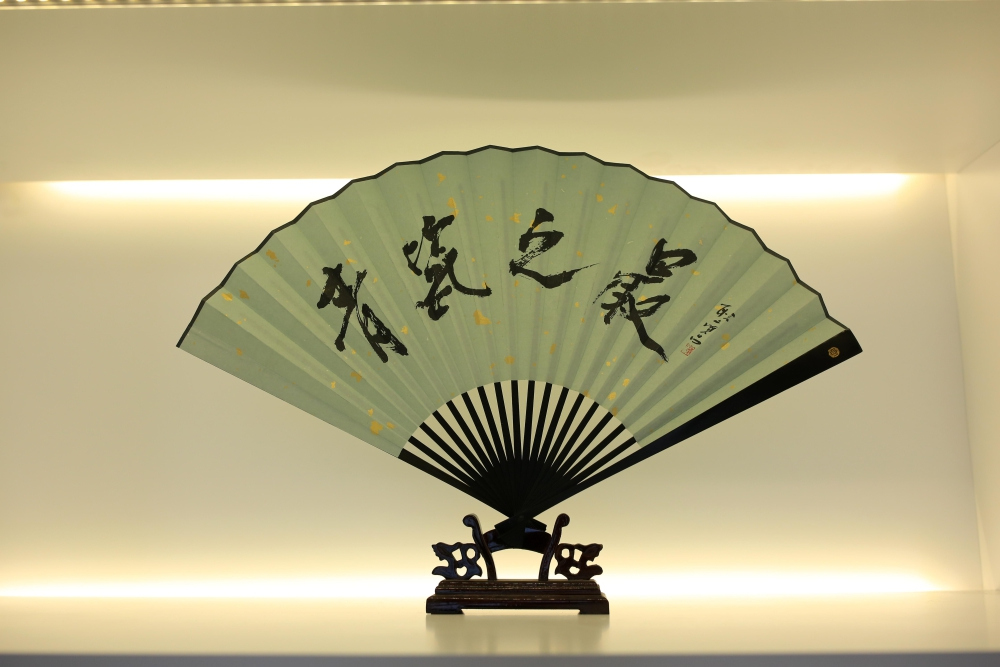
这是历来关于龙泉青瓷的展览中,展品数量最多、来源最广、产地最众且体现多元文化的一次展览,也是对新中国成立70周年的一次献礼。开幕式上,故宫博物院三任院长郑欣淼、单霁翔和王旭东共同为展览揭幕,97岁的故宫陶瓷专家耿宝昌也到场一睹龙泉青瓷。展览将持续至10月20日。
天下龙泉,青瓷之最。在这里,除了欣赏龙泉青瓷珍品之美,你也将透过历史的长河,了解龙泉青瓷的烧造历程和销售盛况,看到其对世界制瓷技术的深远影响,品味“天下龙泉”的深厚文化内涵。
在陶瓷之路里回溯寻踪
这次大展,有故宫博物院收藏的清宫旧藏龙泉青瓷,有墓葬、窖藏、仓库、港口、沉船等海内外重要遗址遗迹出土的龙泉青瓷,也有伊朗、日本等国家主要博物馆收藏的传世龙泉窑瓷器精品。可以说,件件都是难得一见的珍品。
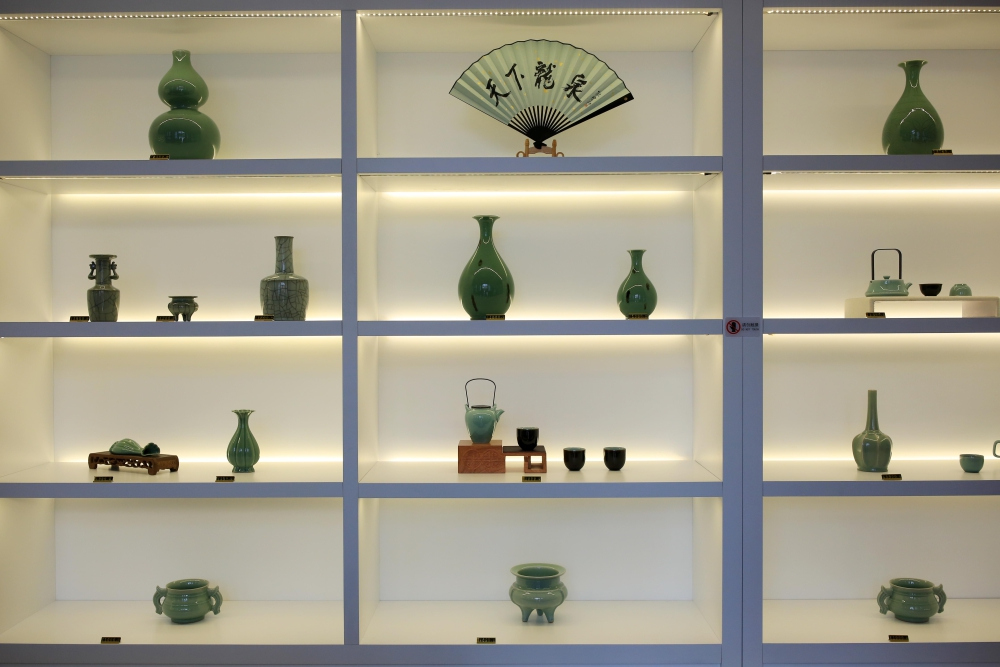
展览以龙泉青瓷为主题,立体地展现出宋元以来陆上及海上陶瓷之路的兴盛发达。展览共分四个单元。第一单元为千年龙泉,以历史脉络为主线,讲述龙泉窑千年来自身的发展过程,揭示其得以影响世界的内因。展品以龙泉青瓷各个时期的代表性器物为主。
第二单元为国家公器,阐释龙泉青瓷在不同历史时期与官府的深刻联系,同时也体现了龙泉青瓷与中国文化的内在关联。展品以故宫博物院收藏的清宫旧藏龙泉青瓷为主,辅之以龙泉窑遗址等考古出土的龙泉青瓷标本,是高品质龙泉青瓷的集体亮相。
第三单元为风行天下,展示龙泉青瓷在中国境内和世界各地的行销和输出情况,这是12世纪至15世纪世界贸易体系的重要组成部分。
最后一个单元为交融辉映,展示国内外各窑场模仿烧造的龙泉青瓷。有福建、广东、江西等国内窑场仿烧的青釉瓷器,也有伊朗、日本、英国、越南、泰国等国家和地区仿烧的青釉瓷器,它们和真正的龙泉窑青瓷同场展出,勾勒出龙泉青瓷生产技术传播、互鉴发展的轨迹。
文明间的交流生生不息。展览现场的一件龙泉窑青釉净瓶,独特之处在于颈部有一圈“相轮”,因此俗称为“吉字瓶”。据故宫器物部主任吕成龙介绍,这是故宫博物院的一件一级文物,器物烧制非常困难,应是随着佛教传播从印度流传而来的一种造型,烧制相轮是为了拿取方便。他还表示,龙泉青瓷在日本的影响很大,中国的文物有八件在日本被定为“国宝”级别,八件中龙泉青瓷就有三件。
宫廷佳器掀起世界风潮
龙泉青瓷,一般指浙江省龙泉市以大窑、金村为中心的窑场在宋、元、明时期烧造的青釉瓷器,也包括龙泉周边各县其他窑厂在同时期烧造的风格相同的青瓷器。
作为中国古代瓷业发展史上的著名品类,龙泉青瓷于北宋时期开始形成自己独特的风格,并在南宋、元代至明代早期达到全盛时期。因为质量精美,龙泉青瓷从北宋末至明代早期一直是宫廷用品。从考古发现看,出土龙泉青瓷的宋、元、明时期遗址遍布全国各地。
龙泉青瓷更一度成为最著名的“中国制造”。作为宋元明时期中国对外输出的主要商品之一,龙泉青瓷也出现在陆上和海上丝绸之路沿线的大部分国家和地区。在东亚、东南亚、南亚、中亚、西亚、北非、东非、南非和欧洲部分国家和地区,大量的遗址都出土有龙泉青瓷,而且很多国家也有龙泉青瓷完整器传世。这反映出龙泉青瓷在全世界范围内的流布和使用情况。
由于海内外市场对龙泉青瓷需求的增加,大量陶瓷器的外销在给中国带来巨额收入的同时,也刺激了中国陶瓷生产的社会分工、地域分工以及陶瓷经济与世界经济的融合。以龙泉青瓷为代表的中国陶瓷经济开始处在当时世界经济链条中的上游。同时,在12世纪到20世纪,越南、泰国、缅甸、伊朗、埃及、叙利亚、土耳其、日本、英国等国家的窑场也纷纷仿烧龙泉青瓷。他们或以自身釉陶技术模仿龙泉青瓷的釉色、器形和纹饰,或全面学习龙泉窑的制瓷技术。世界各地的窑场,以当地的技术与中国龙泉青瓷生产技术的交融、互鉴,实现了仿龙泉青瓷的生产和从产品到文化的交流,并形成了一波影响广泛的早期全球化进程。
如今,龙泉青瓷的美誉仍在全球播撒着。从文创到国礼,龙泉青瓷的身影遍布世界各地。
在浙江省博物馆馆长陈水华看来,通过产品输出带动技术和文化发展,是本次特展揭示的理念与史实,是对“丝绸之路”交流、互惠、共同发展精神的阐释。对于中国海外贸易历史的理解,有助于广大观众更加深刻地理解“一带一路”倡议的缘起。
“天下龙泉”11月回浙江
浙江是青瓷的故乡,浙江省博物馆拥有丰富的青瓷馆藏。本次在北京的展览,浙江省博物馆带去了33件精品文物,其中便有十大镇馆之宝之一的元龙泉窑青瓷舟形砚滴。全省文物共计126件/组。
这是一次跨越了十年的策展。为了了解浙江青瓷在海外的情况,2009年,浙江省博物馆研究人员以“浙江青瓷在海外”为题开始进行专项调查与研究,并设立“海上丝绸之路系列特展”,进行与之相关的多项国际学术活动。2012~2014年,浙江省博物馆与故宫博物院联合申报并承担了国家文物局指南针计划——“中国古代瓷器生产技术的对外传播研究”课题。基于多年的研究成果,“天下龙泉——龙泉青瓷与全球化”特展应运而生。
十年磨一“展”,背后的艰辛可想而知,但于策展人之一、浙江省博物馆陶瓷部主任沈琼华而言,十年,策展的思路在变化,收获和发现不断,“可以说,这场展览也是这十年学术成果的一次集中展示”。
何为“天下龙泉”?她表示,除了分布于世界各地、产自浙江的龙泉青瓷珍品,还有国内外各窑场模仿烧造的龙泉青瓷。后者,可以说是十年里的新发现,“天下龙泉”的范围也得以扩大。
此外,文献和历史的记载,在一些新的考古发现中得以印证。如本次展出的一批故宫所藏的明代皇家用器,很多都来自浙江的窑址。这也佐证了龙泉青瓷从北宋末至明代早期一直是宫廷用品的事实。
据悉,本展览将分两阶段进行,第一阶段于2019年7月15日至2019年10月20日在故宫博物院斋宫、景仁宫举行,观众凭故宫博物院门票免费参观;第二阶段于2019年11月15日至2020年2月16日在浙江省博物馆举行。
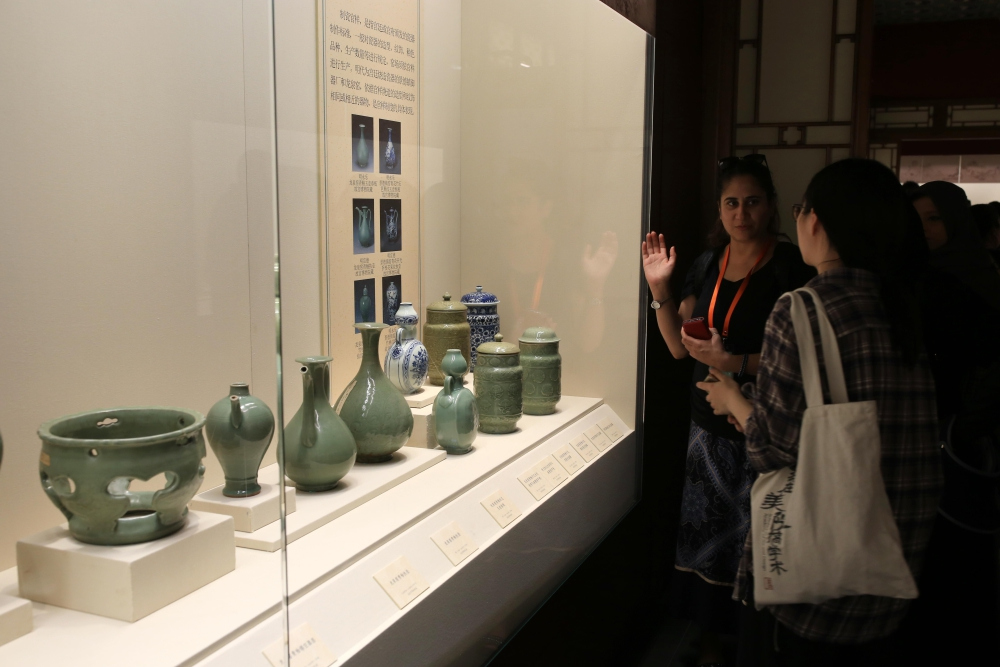
那么,11月的浙博场与故宫的这场展览有区别吗?沈琼华表示,浙江是龙泉青瓷的产地,因此展览在浙江展出时会适当地加大从“源”到“流”的追溯内容,体现展览的地缘性。至于展品,她表示也将有所区别,但展品必须是精品的标准不会降,其中,有一只来自日本的碗备受关注。它叫马蝗绊,是一只龙泉窑青瓷茶碗,被视为最高等级的7级茶具,珍藏在日本东京国立博物馆。马蝗绊产自浙江龙泉窑,六瓣花环形,碗底有裂痕,用锔子锯着。
据传,八百多年前,日本武将平重盛在浙江杭州的育王山(现在的玉皇山)施舍黄金,寺院主持佛照禅师将这一珍贵的龙泉窑青瓷茶碗作为礼物回赠于他,从此,它东渡日本,并被视若珍宝,后亦为室町时代将军足利义政珍藏。它因底部产生裂痕,曾被送回中国寻求同样的替代品,但因当时如此茶碗在中国已然绝迹,只好锔钉奉还。因为修补的锔钉看上去像马蝗,所以被称为“马蝗绊”。
马蝗绊一直在日本享受着最崇高的礼遇,从未走出日本展出。这次,它将在故宫展期的最后两周中亮相,并将在浙博展览中全期展出。
作为今年浙江省博物馆建馆90周年的大展之一,11月的这场展览备受关注,届时观众将可以在龙泉青瓷的发源地一睹“天下龙泉”传承千年的风采。
(摄影:魏志阳)
Longquan Celadon on Display at Palace Museum
Cultural relics offer an insight into the glory of culture. Jade artifacts unearthed from Liangzhu City sites of 5,000 years ago are a perfect example of cultural relics carrying a lost culture.
Culture keeps shining if it is well preserved and kept alive. Longquan celadon, once popular in the world, has been seeing a renaissance and its reputation is strong today. In Japan, a celadon bowl made in Longquan and brought over to Japan is a top-class national treasure.
Longquan celadon is highly appreciated in the world largely because of its aesthetic features: it looks tender as jade, it gives back a clear sound if lightly tapped, it feels smooth and it looks bright. It portrays some admirable Eastern virtues such as naturalness, humility, purity and restraint. Celadon played a key part in trade on the Marine Silk Road.
In this issue, we look at Longquan, a city in southern Zhejiang, made famous by celadon and sword.
July 15, 2019 saw the unveiling of Longquan Celadon and Globalization, an exhibition jointly sponsored by the Palace Museum, Zhejiang Museum and Lishui Municipal People’s Government, at the Palace Museum in Beijing. Altogether, the 833 pieces (sets) of Longquan celadon from 42 institutions at home and abroad highlight the glamour and grace of the porcelain made in the south of Zhejiang. Some exhibits are loaned from major museums in Iran and Japan.
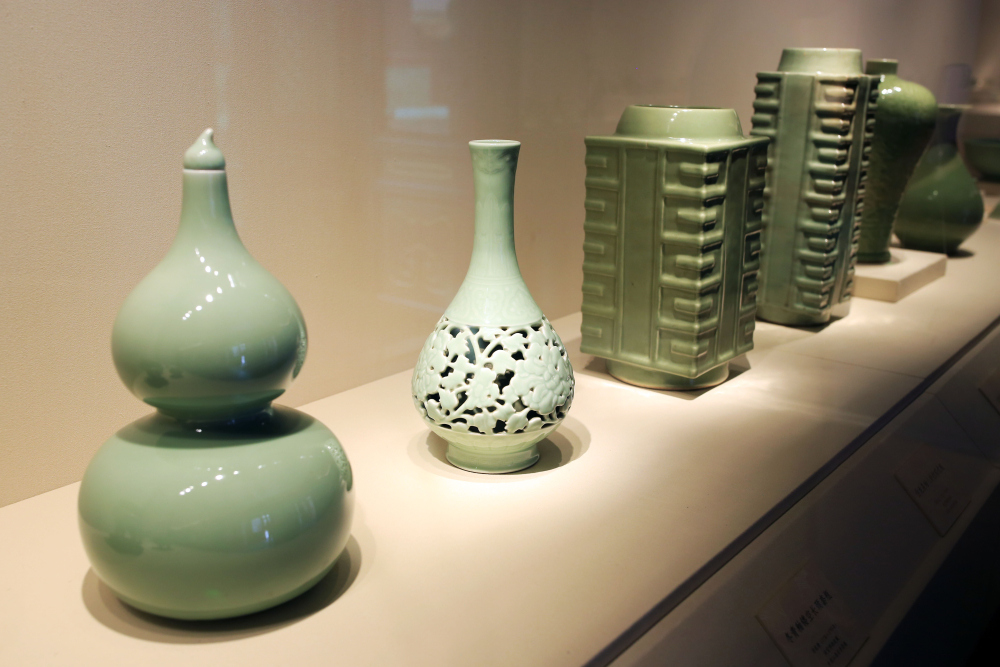
The exhibition will go on at the Palace Museum until October 20, 2019. And it will be relocated to Zhejiang Museum where it will go from November 15 to February 16, 2020.
The exhibition relates a story of Longquan celadon and a cultural dialogue between China and the rest of the world thanks to the celadon’s globalization. No celadon exhibition in the past has ever showcased such a big quantity produced in various places and loaned from so many cultural institutions both at home and abroad.
Zheng Xinmiao, Shan Jixiang, Wang Xudong, two former directors and one incumbent director of the Palace Museum, have visited the exhibition. Geng Baochang, a 97-year-old pottery specialist of the Palace Museum, has also visited the exhibition.
The exhibition is in four chapters, each with a different focus. The first section covers the 1,000-year of celadon, represented a vast array of celadon products of different periods.
The second section showcases the close ties between Longquan celadon and government. Most exhibits in this section are from an imperial celadon collection of the Qing Dynasty (1644-1911) housed at the Palace Museum. Some exhibits in this section are from archaeological excavations in ancient kilns in Longquan. This section displays high-quality celadon masterworks.
The third section looks back at the history of China’s celadon export to the world. Celadon was a key commodity of international trade from the 12th to the 15th century.
The last section displays imitation celadon objects made at different kilns in other parts of China as well as in other countries. The homemade imitation celadon pieces were made in kilns in Fujian, Guangdong and Jiangxi. Celadon exhibits made in Iran, Japan, the United Kingdom, Vietnam, and Thailand are also on display.
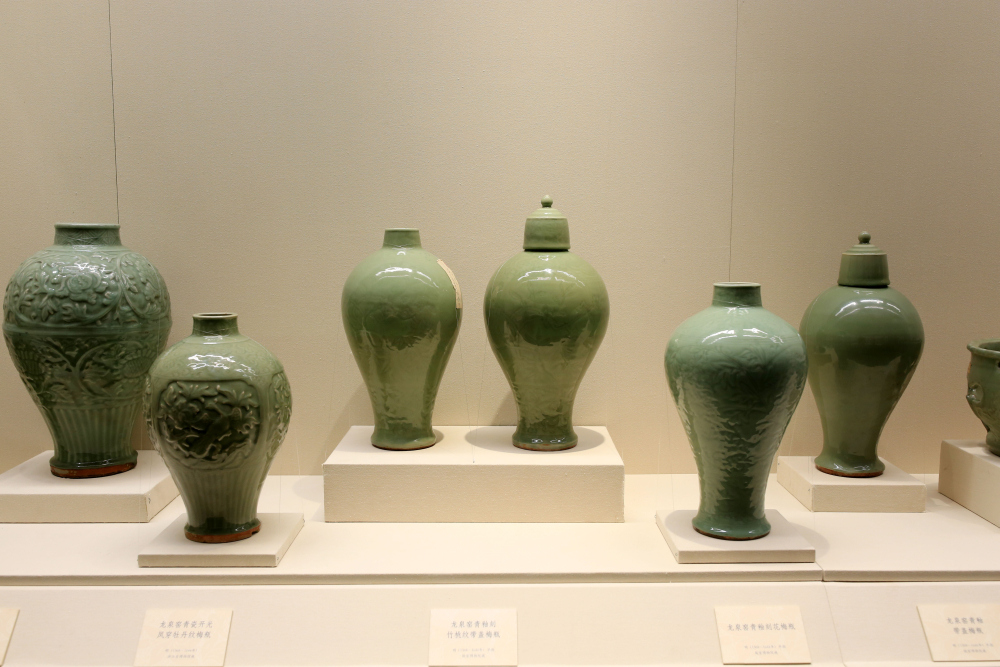
Longquan celadon refers essentially to celadon produced at the kilns in Longquan during the Song, the Yuan and the Ming dynasties essentially from the 10th century to the 17th century. Celadon products made at kilns in neighboring counties during the same period are largely considered Longquan celadon.
Longquan celadon presented a distinct style in the Northern Song (960-1127) and climaxed from the Southern Song (1127-1279) to the Ming (1368-1644). During this period, Longquan kilns supplied a large quantity of celadon pieces for the use of the imperial houses. Archaeologists have unearthed celadon pieces of the same period all over China.
During the Song and the Yuan and the Ming, Longquan celadon was China’s major export to the world. It was shipped through numerous sea routes to other parts of Asia as well as Africa and Europe. Some masterpieces housed in major museums in many countries testify to the glory and charm of Longquan celadon in ancient times.
Longquan celadon was imitated in various ways at kilns in many countries from the 12th century up to the 20th century. The celadon globalization appeared and flourished and lasted for centuries.
Longquan celadon is still going strong today. Old-generation celadon masters are still working and getting recognition in the world and young masters are emerging. Innovative celadon pieces are on market while best celadon masterpieces are used as gifts on diplomatic occasions.
The seed for an exhibition at the Palace Museum germinated ten years ago when Zhejiang Museum launched a study on celadon of Zhejiang in foreign countries. Seminars and exhibitions took place. From 2012 to 2014, Zhejiang Museum and the Palace Museum jointly conducted a project on the international dissemination of porcelain production and technology in ancient China. The project went on under the guidance of the National Cultural Heritage Administration. The idea for a celadon exhibition at the Palace Museum was conceived then. How to display the best of celadon evolved as understanding of celadon deepened in the past ten years. In other words, the exhibition showcases the academic results of the past ten years.
The exhibition also marks the 90th anniversary of the founding of Zhejiang Museum. The exhibition at Zhejiang Museum will be slightly different. More exhibits from Zhejiang will be on display as the province is a big celadon producer. At the exhibition at the Palace Museum, 33 celadon pieces (sets) are from Zhejiang Museum.
A celadon bowl from Japan, which is a top-class Japanese national treasure, will be on display at the exhibition for only two weeks. It will be on display from November to February in Zhejiang.
